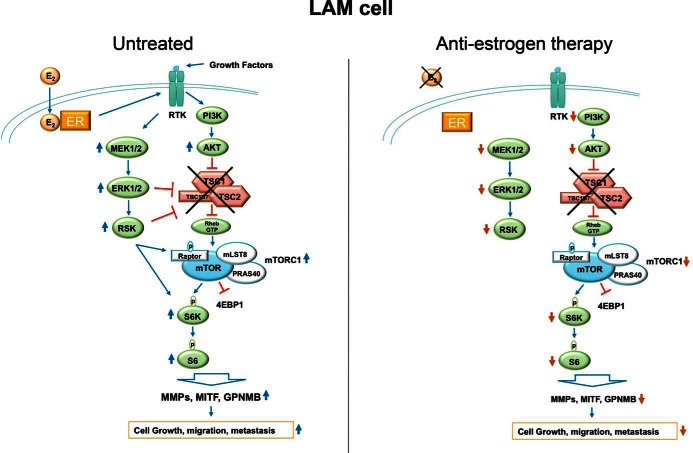Figure 2.
LAM cell signaling. In LAM tumor cells, the TSC1/TSC2/TBC1D7 complex is nonfunctional, which allows mTORC1 to be activated and leads to up-regulation of S6K activity, translational machinery, melanocytic differentiation markers, and proteases such as MMPs. This ultimately results in increased cell growth, migration, and metastasis. Importantly, loss of TSC-mediated suppression is not sufficient to fully activate mTOR. In addition, a positive signal must be present, such as estrogen or growth factors, which, through EGF receptor-mediated ERK activation, promotes mTOR and S6K activities. Estrogen may be a major positive signal in LAM; thus, antiestrogen therapy would reduce mTOR and S6K signaling, as well as the downstream processes of proliferation, migration, and invasion.

